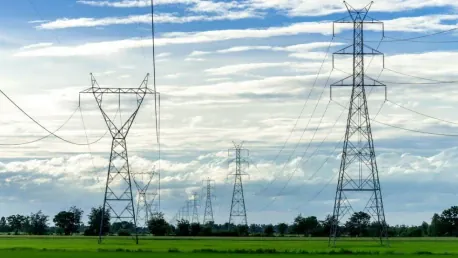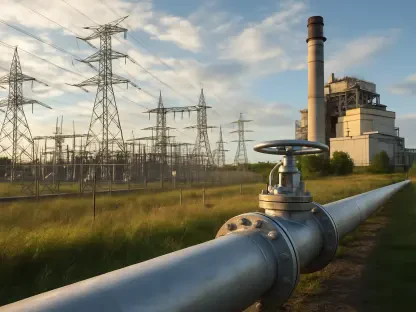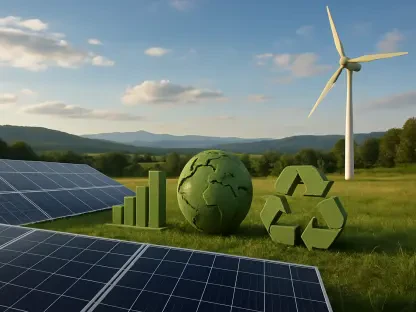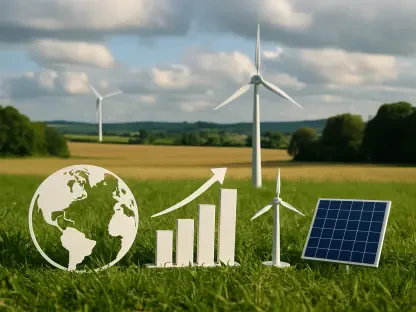The global shift towards electrification has placed lithium at the forefront of technological advancements, particularly in electric vehicles (EVs), energy storage systems, and cutting-edge electronics. As a critical component in lithium-ion batteries, lithium carbonate has become indispensable in the transition to cleaner energy solutions. However, the lithium market is characterized by significant volatility, driven by fluctuating demand-supply dynamics and evolving governmental policies. This article explores how these market trends will shape the future of electrification.
Lithium’s Role in the Energy Transition
Lithium-ion batteries are integral to a wide range of modern technologies, from EVs and large-scale renewable energy storage systems to consumer electronics. This places lithium at the very core of the transition towards cleaner energy solutions. In recent years, the demand for lithium carbonate has surged tremendously, driven by the rapid growth of the EV market and renewable energy technologies. Consequently, this robust demand initially pushed prices to historic peaks as industries scrambled to secure a limited supply. However, over the past year, there has been a notable price correction, primarily attributed to the startup of new lithium production projects and an easing of supply shortages.
The fluctuating lithium prices underline the complex dynamics of the market in response to supply and demand. Increased production capacity has alleviated some of the immediate pressures on supply, allowing prices to stabilize. But this does not negate the ongoing significance of lithium in energy transition efforts. As renewable energy technologies continue to expand and demand for EVs rises, the necessity for a sustained and reliable lithium supply becomes more pronounced. Analyzing these trends is crucial to understanding how the future of electrification will unfold.
Supply and Demand Dynamics
Economic and Policy Influences
Economic challenges in 2024, such as inflation and evolving subsidy frameworks, tempered the growth in EV sales, thereby influencing lithium demand. The potential policy shifts under the Trump administration, including possible rollbacks on EV subsidies and modifications to the Inflation Reduction Act (IRA), added further elements of caution and uncertainty into the market. Despite these challenges, the relentless march towards transportation electrification sustained a strong demand for lithium, particularly for lithium-ion batteries.
However, this period has vividly illustrated the delicate balance of the market. While economic hiccups and policy shakiness can temporarily dampen demand, the overarching commitment to reducing carbon emissions and transitioning to sustainable energy solutions has maintained the momentum for lithium demand. Policymakers and industry stakeholders must navigate these economic and policy influences carefully to ensure stable growth and adequate supply.
Global Demand and Government Incentives
The global demand for lithium showed resilience in part buoyed by government incentives across various jurisdictions. Binding decarbonization mandates and the aggressive expansion of EV charging infrastructure in key markets such as Europe and China fortified this resilience. Although certain regions experienced reduced subsidies that temporarily dampened lithium demand, these effects were largely contained and did not significantly alter the global market trajectory. The long-term outlook for lithium remains optimistic, driven by substantial growth anticipated as nations and industries relentlessly pursue ambitious net-zero targets.
This global alignment towards decarbonization and sustainable energy further underscores lithium’s role as an indispensable component in the broader transition to cleaner energy. While temporary reductions in subsidies can create short-term market fluctuations, the overarching policy environment remains conducive to robust demand for lithium. The expansion of the EV charging infrastructure and binding decarbonization mandates illustrate the sustained commitment to electrification, which bodes well for the future of lithium demand.
Supply Side Adjustments
The supply landscape of the lithium market in 2024 experienced significant adjustments marked by production cuts across Chinese and non-Chinese operations. Refinery production in China notably diminished, while major Australian projects led by Pilbara Minerals and MinRes faced delays or had operations scaled back. These factors, combined with wider capital expenditure reductions, decelerated the rate of supply expansion, raising concerns about the West’s potential loss of market share to China, which continues to dominate lithium refining.
Nonetheless, some production increments were observed, especially within South America’s Lithium Triangle (comprising Chile and Argentina), partly mitigating the overall supply slowdown. These adjustments highlight the intricate balancing act required to manage oversupply risks while catering to the ever-growing demand sourced predominantly from EVs and energy storage systems. The supply challenges spotlight the importance of strategic planning and investment in lithium production to ensure a stable and sufficient supply that keeps pace with rising global demand.
The Lithium Price Forecast Model
Demand Indicator: EV Sales
EV sales have emerged as the foremost demand driver for lithium, and the exponential growth of the EV market is expected to persist in the coming years. GLJ’s robust forecasting model integrates historical sales data and forward-looking projections to evaluate the expansive adoption of EVs and its impact on lithium pricing trends. This data-driven approach provides a nuanced understanding of how the evolving landscape of the EV market influences lithium demand and price.
Understanding the symbiotic relationship between EV sales and lithium demand is crucial for accurate market forecasting. As EV adoption expands, so does the need for lithium-ion batteries, thereby elevating demand for lithium carbonate. This linkage creates a feedback loop where enhancements in EV technology and market penetration directly correlate with lithium price dynamics. Historical data, combined with predictive analytics, offers insightful perspectives into these interdependencies and their future implications.
Supply Indicator: Production and Refinement
The conversion of lithium into its usable forms, such as lithium carbonate, remains central to price formation. GLJ’s forecasting model not only considers historical production data on a global scale but also tracks trends in lithium mining and extraction. This comprehensive approach facilitates an informed assessment of how previous production levels and capacity expansions can influence future price trajectories.
Lithium production and refinement processes are inherently linked to supply dynamics. Monitoring these processes enables stakeholders to predict potential supply constraints and plan accordingly. By integrating data on global lithium mining trends and refining capabilities, the forecast model offers a holistic view of the factors that shape lithium supply and, consequently, market prices. This detailed analysis is instrumental for stakeholders looking to navigate the complexities of the lithium market proactively.
Energy Market Indicators
Energy market trends, particularly fluctuations in natural gas prices, are integrated into the forecasting model due to their substantial impact on lithium production costs. Variations in these costs can significantly affect overall market dynamics, since energy expenses play a critical role in the extraction and processing of lithium. Incorporating energy market indicators offers a more comprehensive view of the elements influencing lithium prices.
Lithium production is an energy-intensive process, and changes in energy prices directly impact production costs. By including energy market indicators in the model, GLJ provides a more accurate and holistic analysis of the factors affecting lithium pricing. Fluctuations in natural gas prices, for instance, can cause ripple effects throughout the supply chain, influencing lithium production costs and thus altering market dynamics. This integration allows for a nuanced understanding of how broader energy market trends intersect with lithium market behavior.
Key Insights from the Model
Correlation and Predictive Power
The forecast model underscores the profound interplay between global EV sales, lithium production levels, and broader market forces in shaping lithium price trends. These interlinked factors highlight the necessity of aligning demand growth with supply capabilities, extracting valuable insights into market behavior and pricing outcomes. By examining the correlation between these variables, the model provides predictive power that informs stakeholders’ strategic planning and decision-making processes.
Accurate correlation and predictive power are paramount for navigating the volatility of the lithium market. The interdependencies between EV sales, production levels, and market forces underscore the importance of a data-driven approach to market analysis. By leveraging historical data and predictive analytics, the forecast model elucidates the intricate relationships that shape lithium pricing trends, offering actionable insights for stakeholders operating within this dynamic landscape.
Global EV Sales
The model identifies a discernible upward trajectory in global EV sales, anticipated to persist through the 2025-2030 period. This trend is directly proportional to increased lithium demand, reaffirming the pivotal role of EV adoption in influencing lithium market behavior and pricing patterns. As EV adoption accelerates globally, the demand for lithium-ion batteries will continue to grow, reinforcing the importance of a stable and sufficient lithium supply.
The sustained upward trajectory in global EV sales underscores the critical importance of lithium in the broader electrification narrative. As more consumers and industries transition to electric vehicles, the demand for lithium-ion batteries will escalate correspondingly. This pervasive trend emphasizes the necessity for strategic foresight and investment in lithium production to ensure that supply meets the growing demand, thus stabilizing prices and supporting the ongoing energy transition.
Supply Constraints and Market Deficits
Industry projections suggest that a supply deficit within the lithium market could emerge as early as late 2026 or early 2027. This anticipated deficit reflects the challenges associated with scaling lithium production to match the surging demand from EVs, stationary energy storage systems, and other applications. These findings resonate with broader market analyses, emphasizing the difficulties of achieving sufficient supply expansion amidst the accelerating global push for electrification and renewable energy adoption.
The looming supply constraints and potential market deficits underscore the urgency of addressing production scalability challenges. As demand continues to outpace supply, stakeholders must prioritize investment in lithium production and refinement technologies. Collaborative efforts between governments, industries, and technology providers will be crucial in ensuring that supply constraints do not hinder the progress of the energy transition. Proactive measures to enhance lithium extraction and processing capabilities will be instrumental in mitigating potential market deficits.
Projection Scenarios: High, Base, and Low
High Scenario (P10)
The high scenario envisions a pronounced surge in EV demand alongside acute supply challenges, which could catalyze significant price escalations. In this scenario, the combination of robust demand and constrained supply creates a perfect storm for market volatility, potentially driving lithium prices to unprecedented heights. Stakeholders must brace for these escalations by implementing strategic measures to secure a stable supply chain and mitigate price volatility.
The high scenario necessitates preparedness for potential market disruptions. Stakeholders should explore innovative strategies to diversify supply sources, enhance production efficiency, and invest in alternative technologies that can alleviate supply constraints. These proactive measures will be vital in navigating the challenging landscape of the high scenario and ensuring the stability and affordability of lithium resources.
Base Scenario (P50)
The base scenario posits steady EV adoption coupled with incremental supply growth, projecting elevated yet stable prices. This scenario represents a balanced approach where demand growth is met with corresponding supply expansions, maintaining market equilibrium. Stakeholders can leverage this stability to plan long-term investments and implement strategies that support sustained growth and price stability in the lithium market.
In the base scenario, the alignment between demand and supply creates an environment conducive to strategic planning and investment. Industries can capitalize on this stability to develop robust supply chains, enhance production capacities, and drive innovation in lithium extraction and refinement technologies. The base scenario offers a favorable landscape for stakeholders to pursue sustainable growth, minimize risks, and maximize returns on investment in the burgeoning lithium market.
Low Scenario (P90)
The low scenario anticipates slower growth in EV adoption coupled with moderate supply increases, potentially leading to relatively stable and lower prices. In this scenario, the subdued demand growth is offset by incremental supply enhancements, resulting in a more balanced market. Stakeholders should adopt a cautious approach, focusing on efficiency improvements, cost management, and exploring new market opportunities to navigate the low scenario effectively.
The low scenario highlights the importance of flexibility and adaptability in response to evolving market conditions. While the growth in EV adoption may be slower, opportunities still exist for stakeholders to optimize production processes, reduce costs, and explore innovative applications for lithium resources. By adopting a proactive and adaptive approach, industries can effectively manage the risks and capitalize on the opportunities presented by the low scenario, ensuring long-term viability and success in the lithium market.
Conclusion
The lithium market stood at a critical juncture, driven by the exponential growth of EVs, sophisticated deployment of energy storage systems, and the broader transition to clean energy technologies. GLJ’s data-driven forecast model offered stakeholders critical insights to navigate the dynamic lithium market and strategically adapt to varied scenarios. While uncertainties permeated the landscape, GLJ’s commitment to refining the model and monitoring pivotal market dynamics ensured the provision of actionable intelligence to support informed decision-making. GLJ’s extensive expertise in subsurface resource assessment and upstream energy development positioned it as a valuable partner in evaluating and advising on lithium brine projects leveraging Direct Lithium Extraction (DLE) technologies. This method extracted lithium from subsurface brines, inclusive of those found within oil and gas or geothermal reservoirs.
Expert Guidance and Future Enhancements
GLJ’s proven capabilities in guiding clients through the intricacies of new project development and navigating market uncertainties were underscored by its recent lithium project experiences. For further engagement and to propel projects forward, stakeholders are encouraged to stay connected with GLJ, as the team continues to enhance methodologies and track developments shaping the future of this critical commodity.
Final Notes
The global shift towards electrification has placed lithium at the center of technological progress, particularly in electric vehicles (EVs), energy storage systems, and advanced electronics. As a critical element in lithium-ion batteries, lithium carbonate is essential for the move to cleaner energy solutions. This rising demand for lithium is largely fueled by the increasing adoption of EVs and the expansion of renewable energy infrastructure.
Nonetheless, the lithium market is marked by considerable volatility due to the ever-changing demand-supply dynamics and evolving governmental policies. Factors such as fluctuating raw material prices, mining challenges, and trade regulations can significantly impact the market. Moreover, the competition to secure lithium resources has intensified, leading to a race among companies and countries to ensure a stable supply.
Understanding these market trends is crucial for stakeholders aiming to navigate the complexities of the lithium industry. The future of electrification will heavily rely on advancements in lithium extraction and processing technologies, efficient recycling methods, and strategic governmental support. By addressing these challenges, the industry can pave the way for a sustainable and electrified future, driving further innovation and reducing our dependence on fossil fuels.









